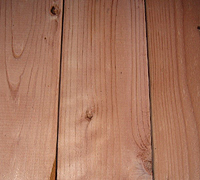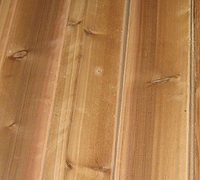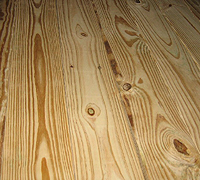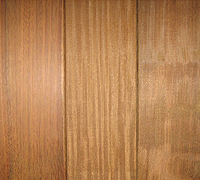Compare Materials

REDWOOD
Redwood is the best choice for decking when considering a type of wood. Redwood has grown-in preservatives that give it both resistance to rot and insects. It is also the most stable of all softwoods. It will not warp, cup, or split like other woods will with moisture. Redwood is available in a wide variety of grades for an endless number of uses. The grade of redwood that we stock for decking, and other outdoor projects, is construction heart. This is the best choice for our climate because it does not allow for any sapwood. The heartwood is the only part of a redwood tree that carries the resistance to decay and insects. Any sapwood present in a piece of redwood, which is white in color, will rot as quickly as untreated pine. We also stock a clear grade called Heart B. This grade will also be all heartwood with a limited number of knots or blemishes allowed in a board. Heart B is generally requested for more finish work or accent pieces, such as handrail or benches or when building furniture.

WESTERN RED CEDAR
Western Red Cedar shares many of the characteristics that redwood has. It is also a very stable, rot resistant wood. The main difference between the two is appearance. Where redwood is very uniform in color, cedar will have many color variations throughout the wood, ranging from a light tan to a dark brown along with some reds. This color variation will remain visible through a good translucent stain, and is one reason many people choose cedar. It is not necessary to stain cedar or redwood for them to withstand the elements, but a stain is the only way to prevent any wood from fading to a silvery gray. If you do plan to allow the wood to weather naturally, it is advised to use a penetrating, oil-based water sealer to protect the wood from developing small splits or surface checks. In both redwood and cedar we stock 2×6 deck boards. We also stock 5/4×6 cedar deck boards.

TREATED PINE
Treated Yellow Pine is a commonly used option. Most often, price is the main reason for picking treated pine. From a appearance point of view, it is not the best choice to use for decking. Yellow pine is an unstable wood by nature. When pine gets wet and swells then dries and shrinks back, it develops large splits and tends to move dramatically, both warping and twisting. It is not naturally resistant to decay and insects, so it is treated with chemicals under high pressure to give it those properties. As a framing material it is the best choice. Where it is not exposed to the sun, it does not have such a tendency to split or move. The chemicals added to the wood make it very rot resistant. On a deck surface you are likely to begin replacing boards within a few years due to splitting and cupping that will occur. If it is kept stained or sealed, these problems can be reduced to some extent.

HARDWOODS
Hardwoods, primarily imported from South America, have become another popular choice. The most common one is Ipe. These are the densest woods used for decking. They are very durable, but do tend to be the most expensive choice of all the options. The only drawback, if there is one, is that they are so dense that a stain will not penetrate the wood very well. To prevent them from turning gray in the sun, they have to be stained more frequently than any other wood. Given the density of these species, they will also be a little harder to work with.


